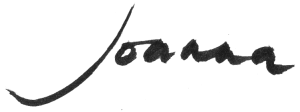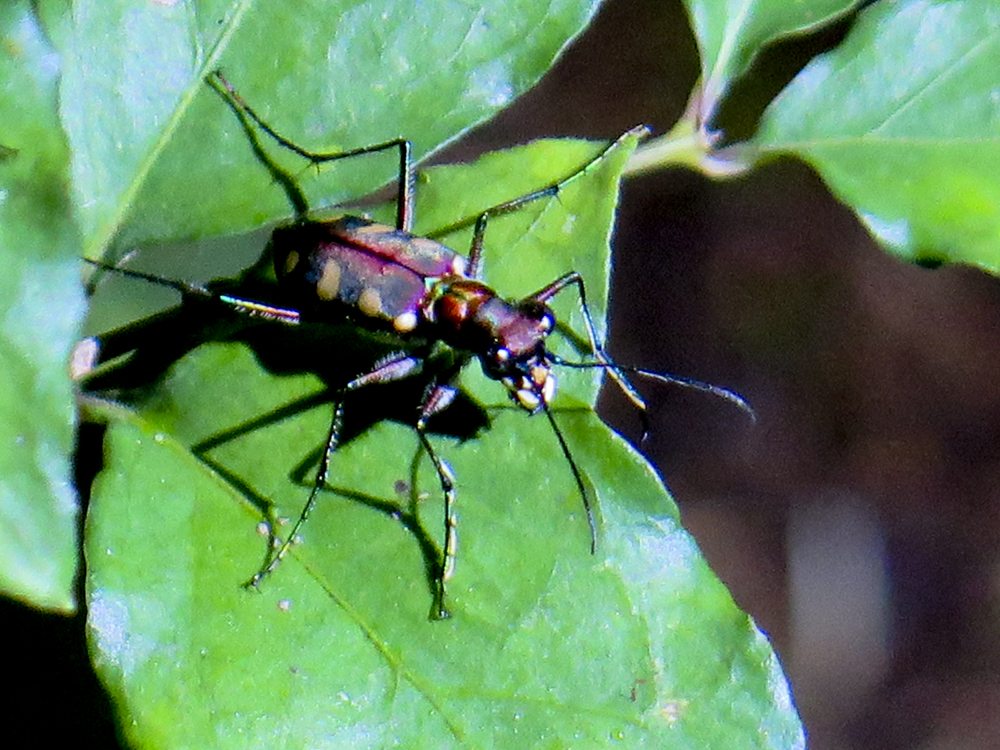Greetings everyone,
In this third blog from my Sabah trip, I am sharing a few details gleaned from walks in the forest – with a focus on the forest floor and shrub layers. The tropical rainforest has five layers – the emergent layer where trees can grow to heights of 50-60 metres, the main canopy layer which is home to 50% of the plant species, the understory layer which only receives about 5% of the sunlight shining on the main canopy, the shrub layer where almost all of the rainforest animals are found, and the forest floor which receives only 2% of the sunlight and where ants, termites, worms and fungi recycle nutrients from dead plant and animal matter into soil which in turn nourishes the plants.
Taking a little time to observe the forest floor revealed all manner of delights. I loved the variety of fungi shapes and colours, the interesting patterns and habitats of the insects and the way the wild flowers and plants emerged through the undergrowth to attract the eye.
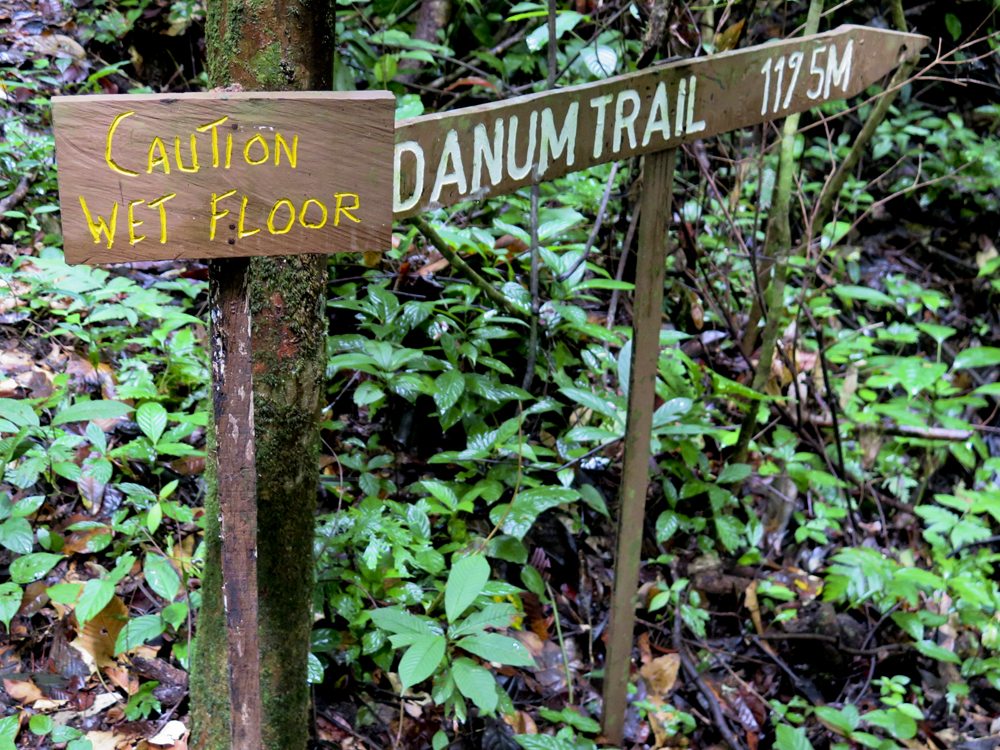 Just in case one thought otherwise, we were warned that the ‘forest floor’ could be a little wet and slippery
Just in case one thought otherwise, we were warned that the ‘forest floor’ could be a little wet and slippery
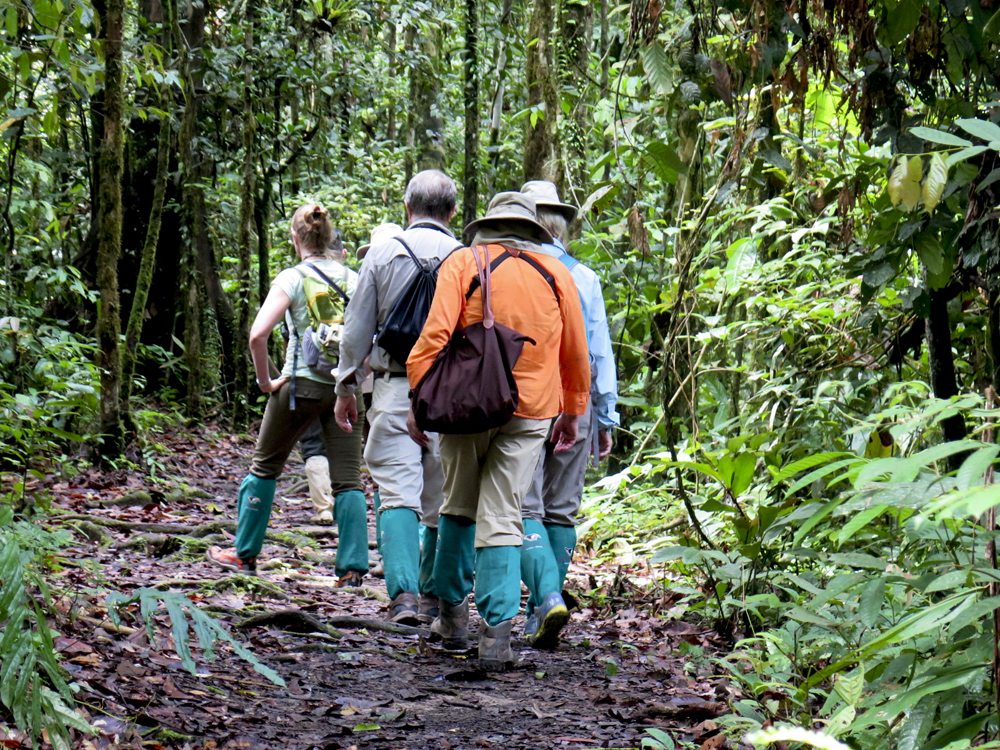 We were also advised that there were plenty of leeches wanting us to donate our blood so ‘leech socks’ were required wear
We were also advised that there were plenty of leeches wanting us to donate our blood so ‘leech socks’ were required wear
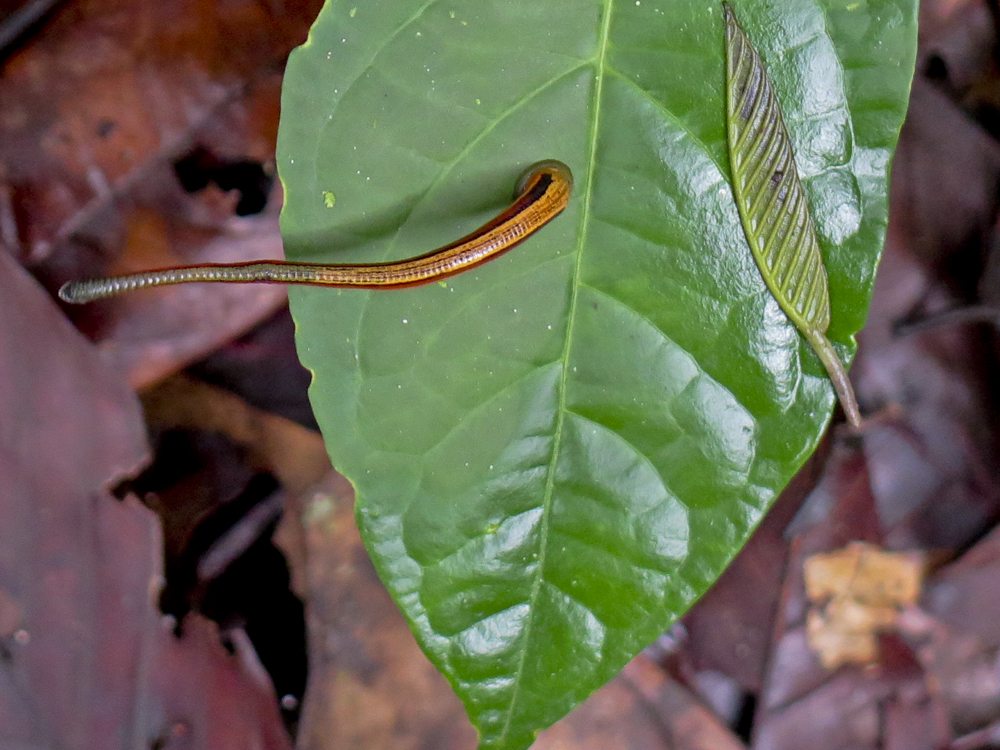 And indeed there were plenty, like this tiger leech, just waiting and poised to latch onto any available skin
And indeed there were plenty, like this tiger leech, just waiting and poised to latch onto any available skin
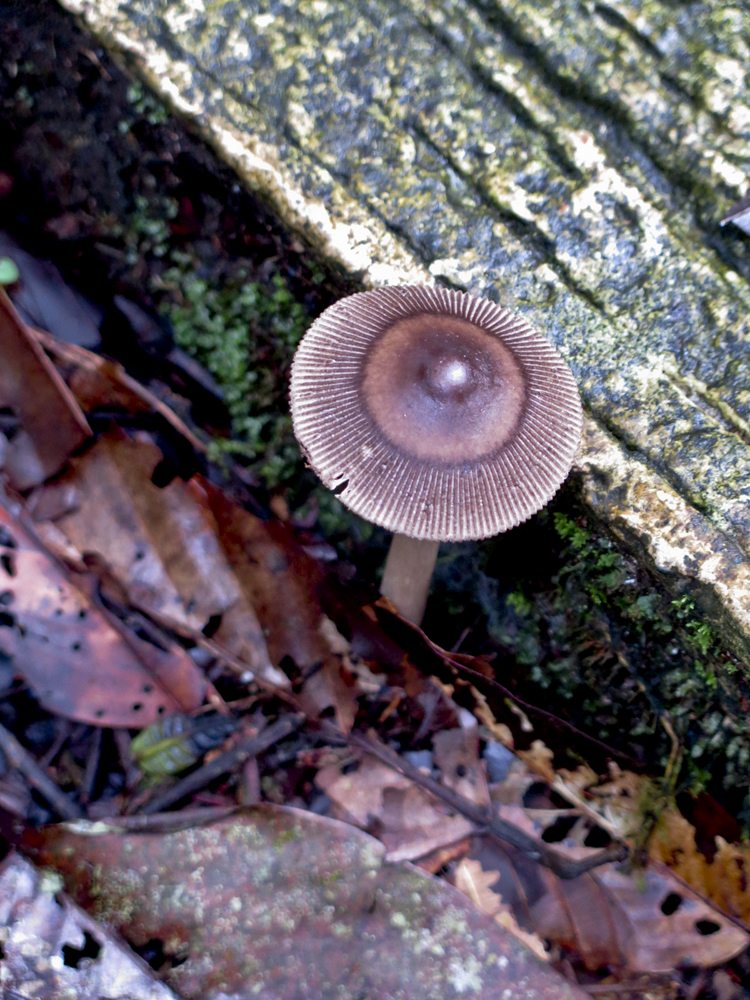 There were toadstools and fungi of all colours and shapes, for which only an expert would know the names
There were toadstools and fungi of all colours and shapes, for which only an expert would know the names
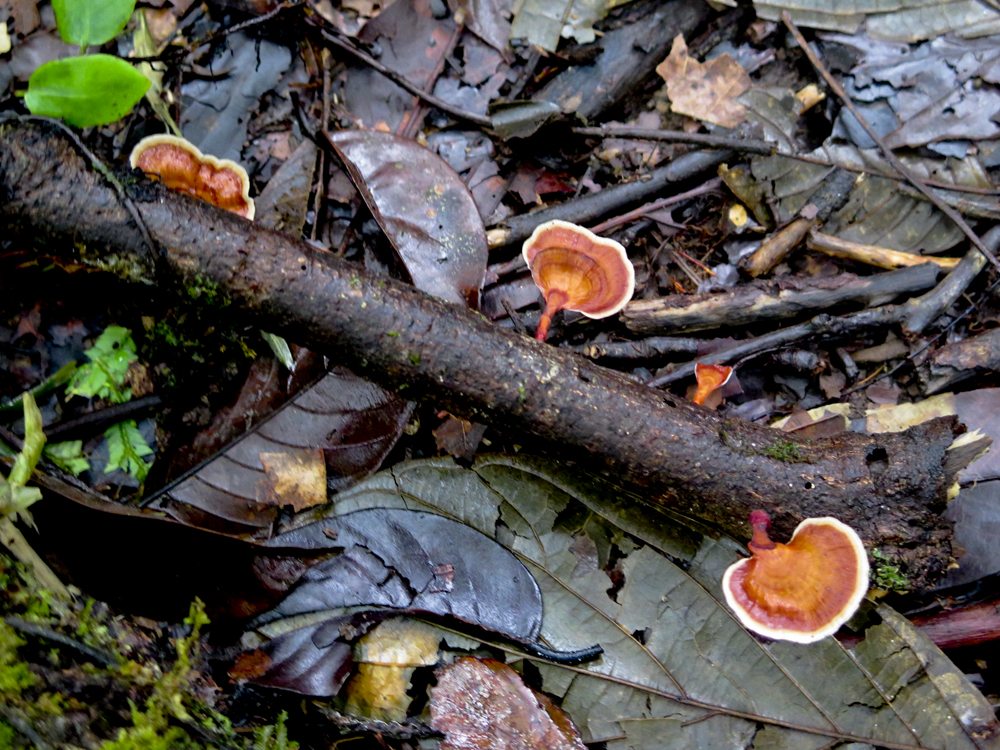 Some clinging to the sides of fallen branches
Some clinging to the sides of fallen branches
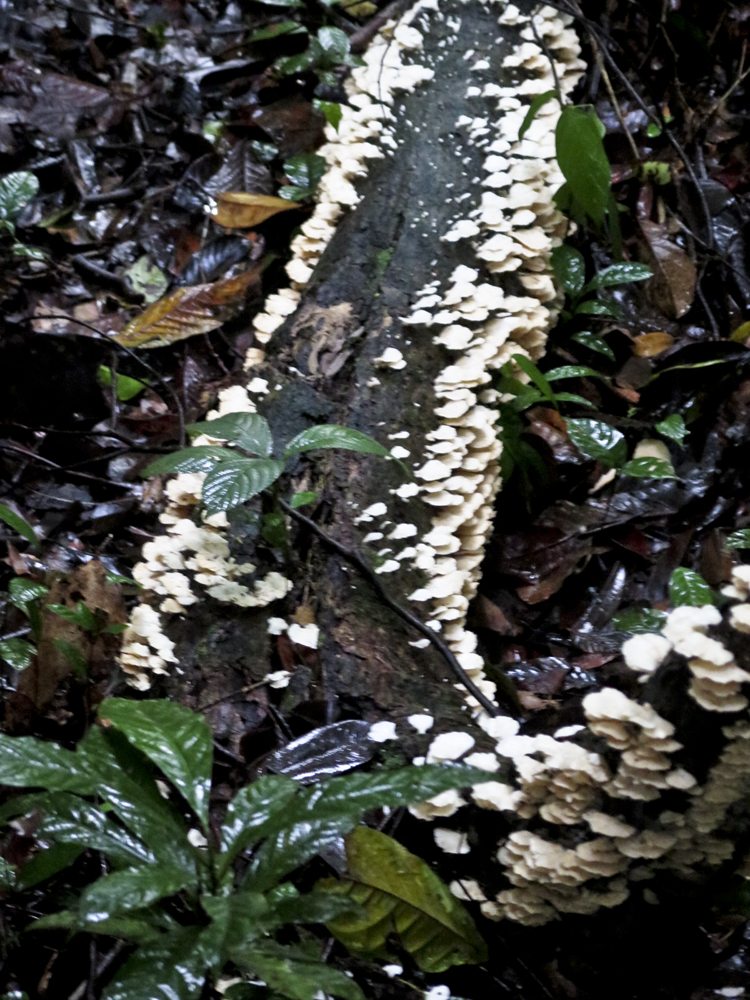 Or colonising rotting logs
Or colonising rotting logs
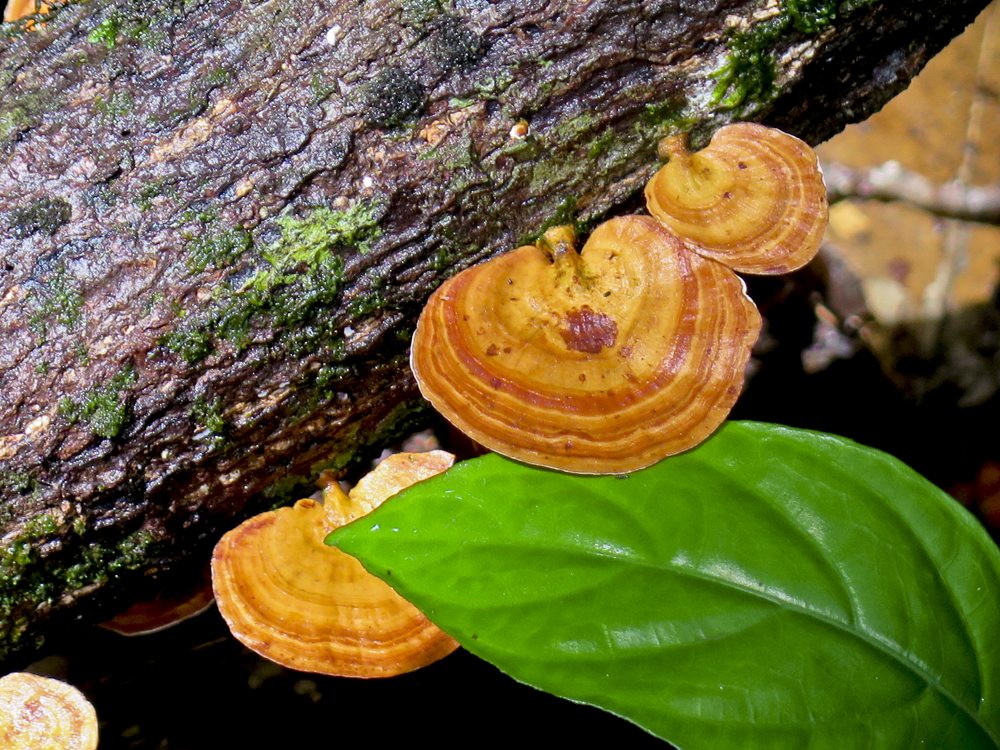 Bright spots of colour against a moss covered log
Bright spots of colour against a moss covered log
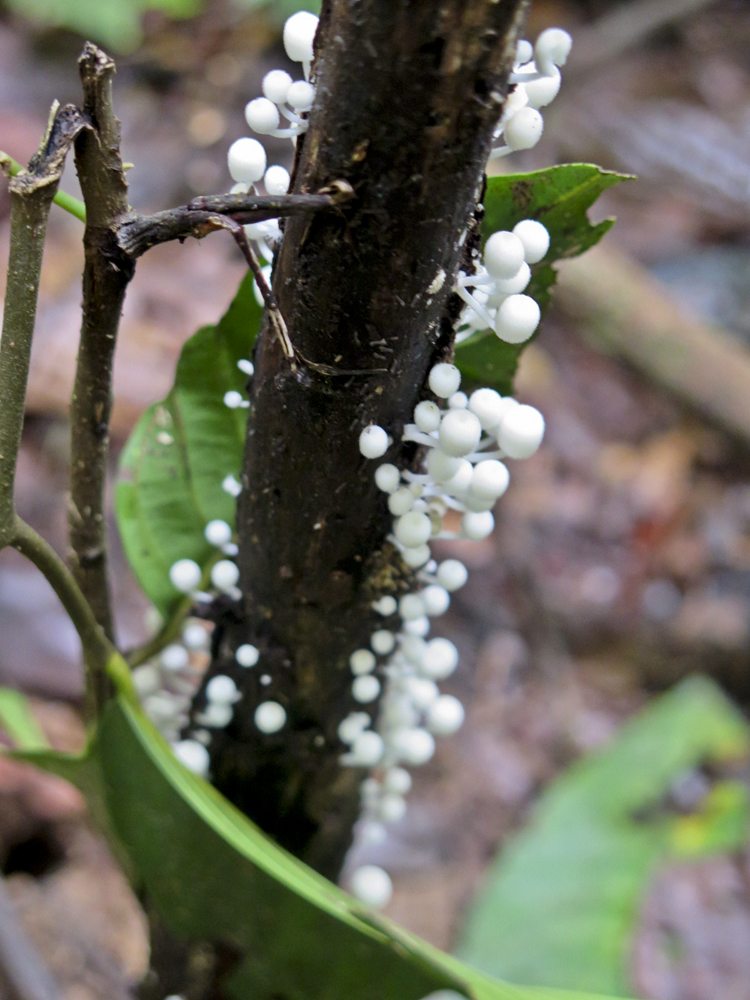 Others already sprouting on living shrubs
Others already sprouting on living shrubs
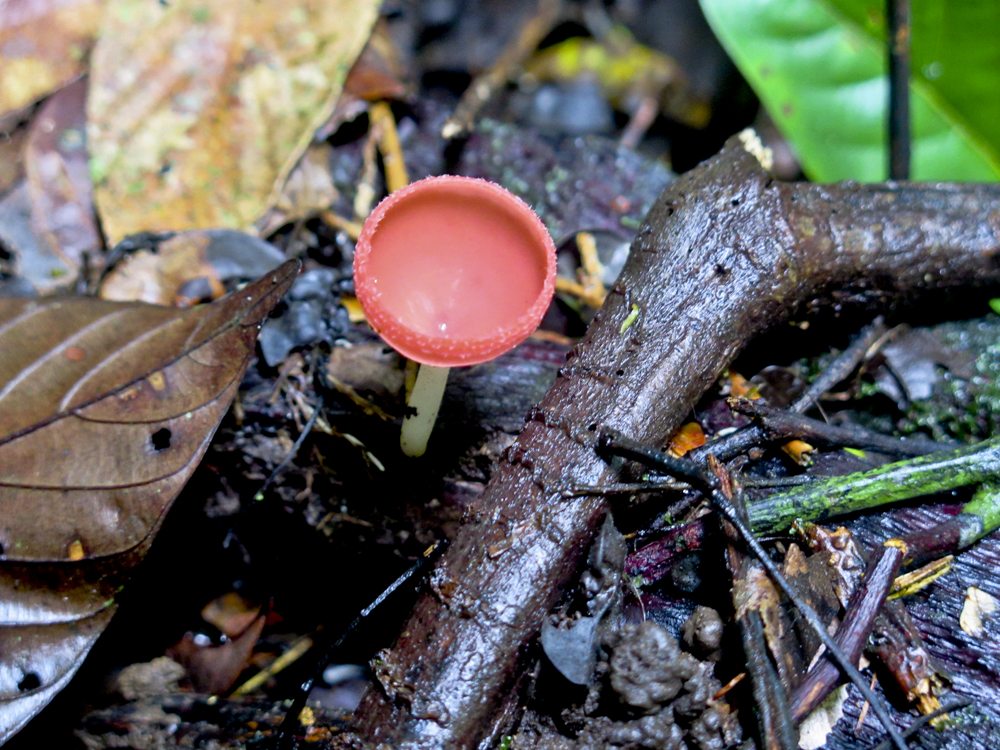 And my favourite, an aptly named Red Cup toadstool
And my favourite, an aptly named Red Cup toadstool
Then there were the lizards and insects to watch out for, many very difficult to see but our guides
had eagle eyes and knew of places where we were likely to see some
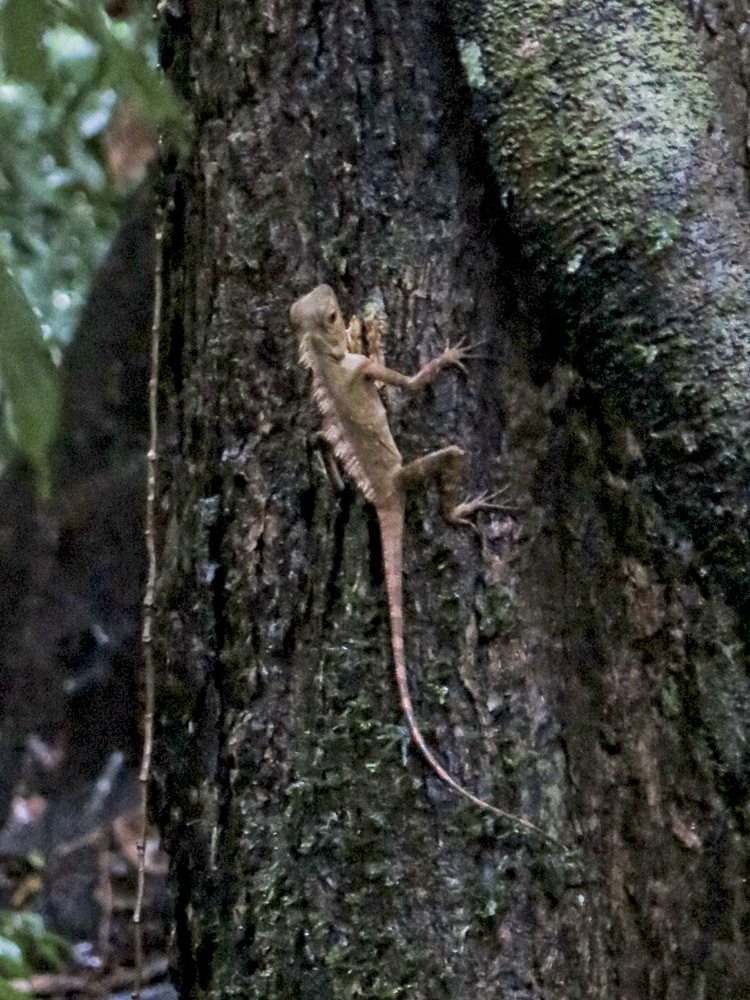 A beautifully spiked back warns off the predators of this lizard
A beautifully spiked back warns off the predators of this lizard
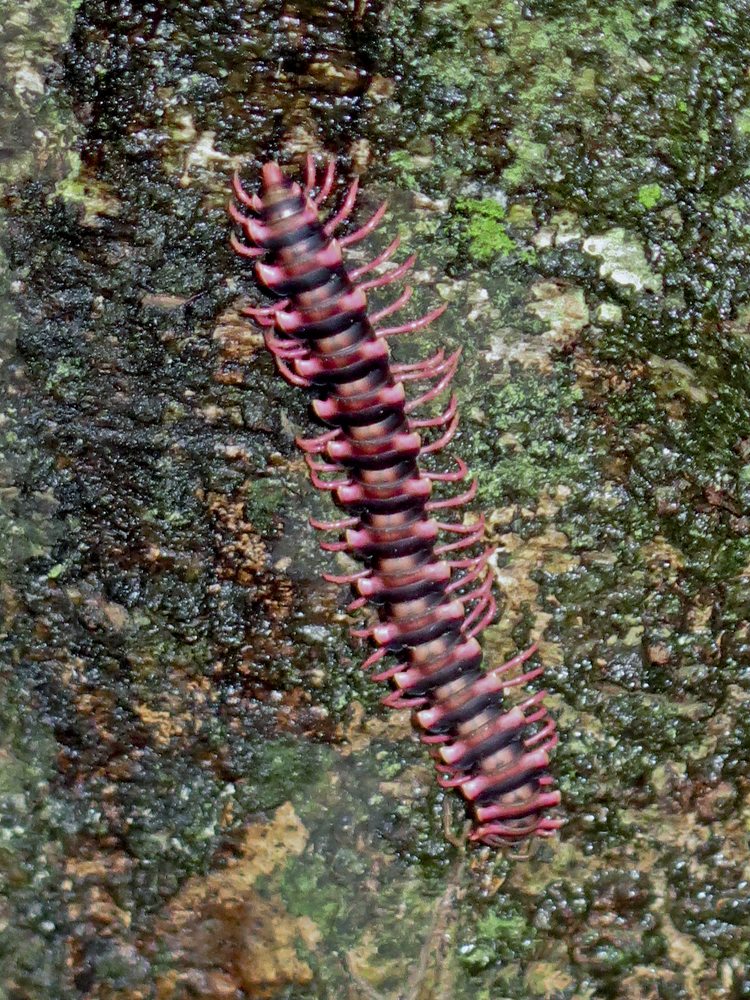 And this colourful creature is a ‘Tractor Millipede’
And this colourful creature is a ‘Tractor Millipede’
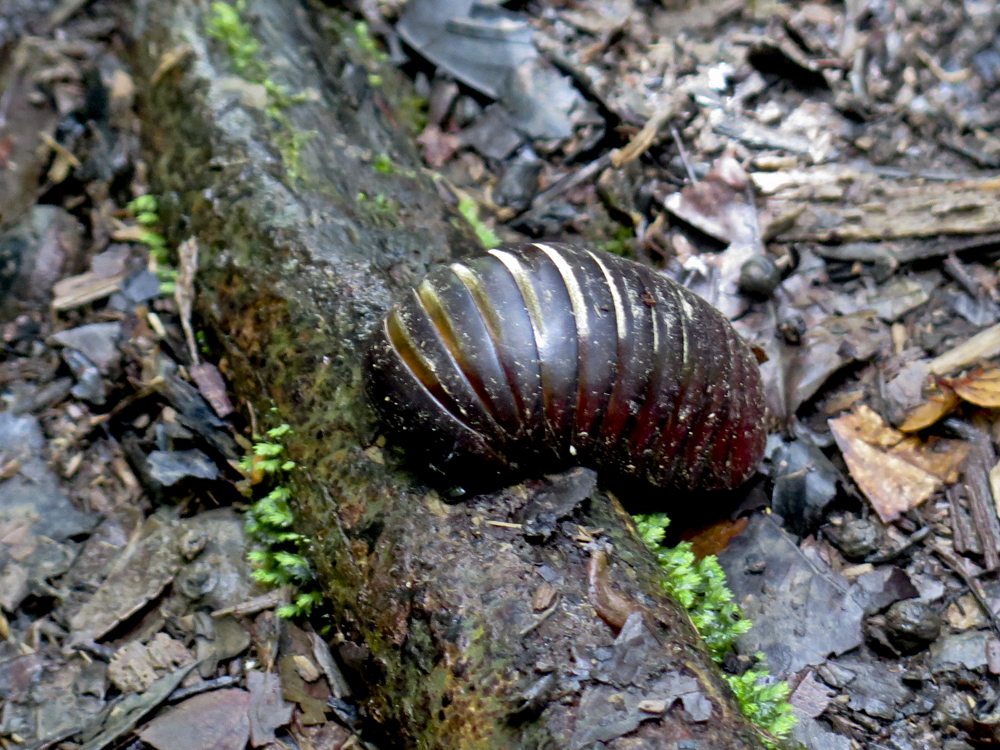 Another one – the Dollar Millipede, so named because it curls into a ball when attacked, to look a little like a coin
Another one – the Dollar Millipede, so named because it curls into a ball when attacked, to look a little like a coin
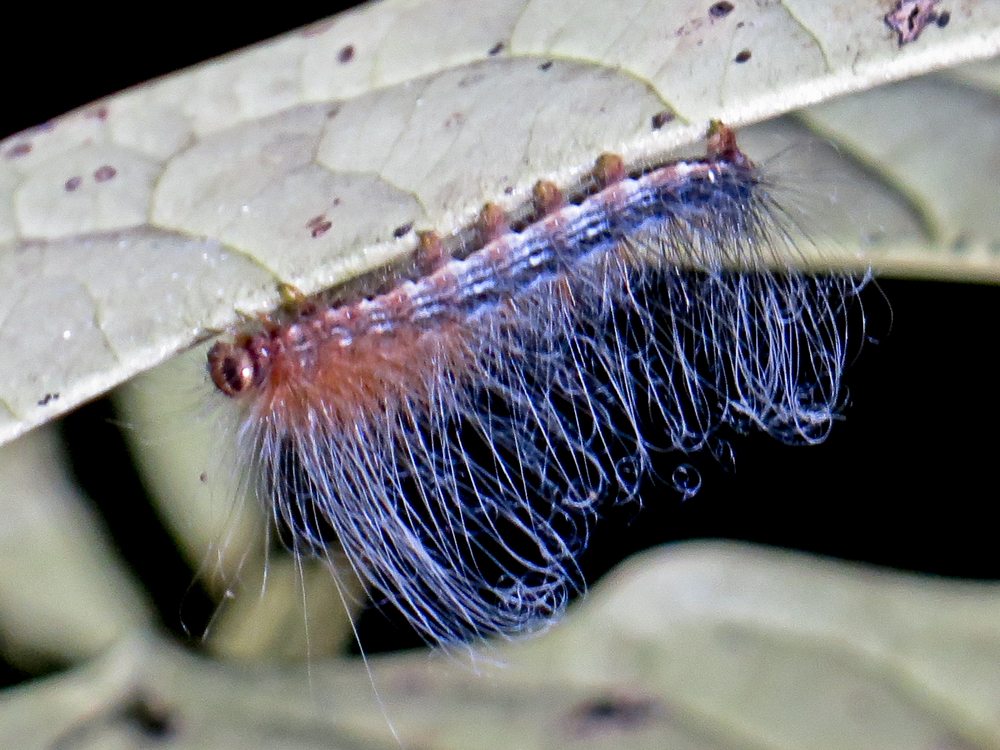 A wonderfully coloured hairy caterpillar
A wonderfully coloured hairy caterpillar
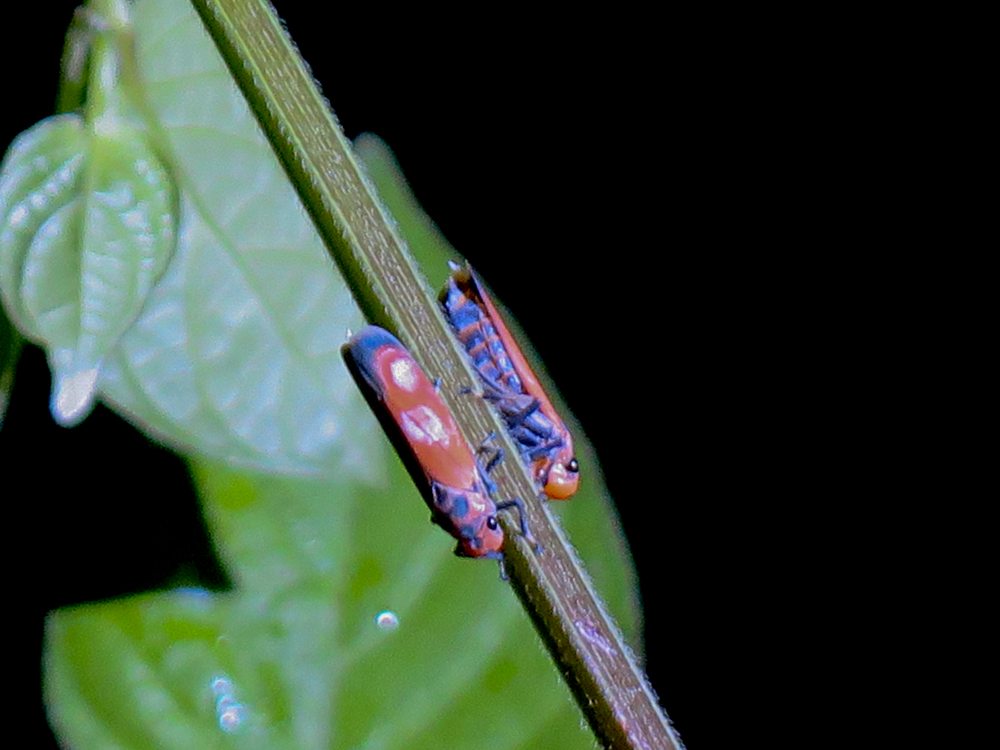 And what about this pair of pink and blue insects – are they a couple or just friends stopped to gossip?
And what about this pair of pink and blue insects – are they a couple or just friends stopped to gossip?
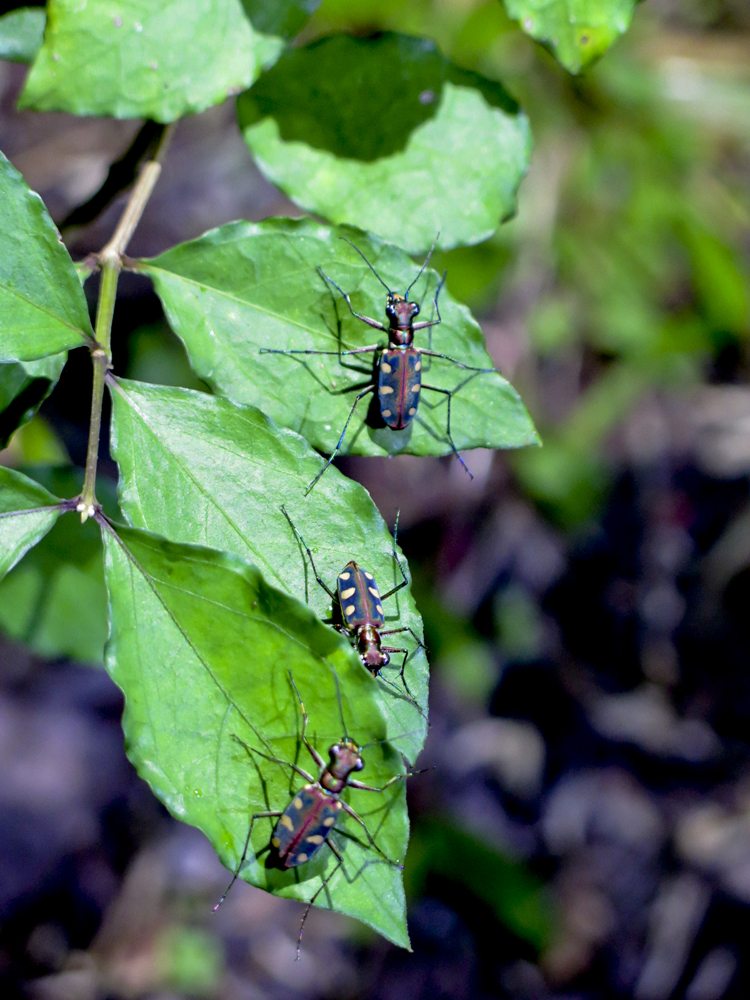 And then there were three Katydids, each to their own leaf
And then there were three Katydids, each to their own leaf
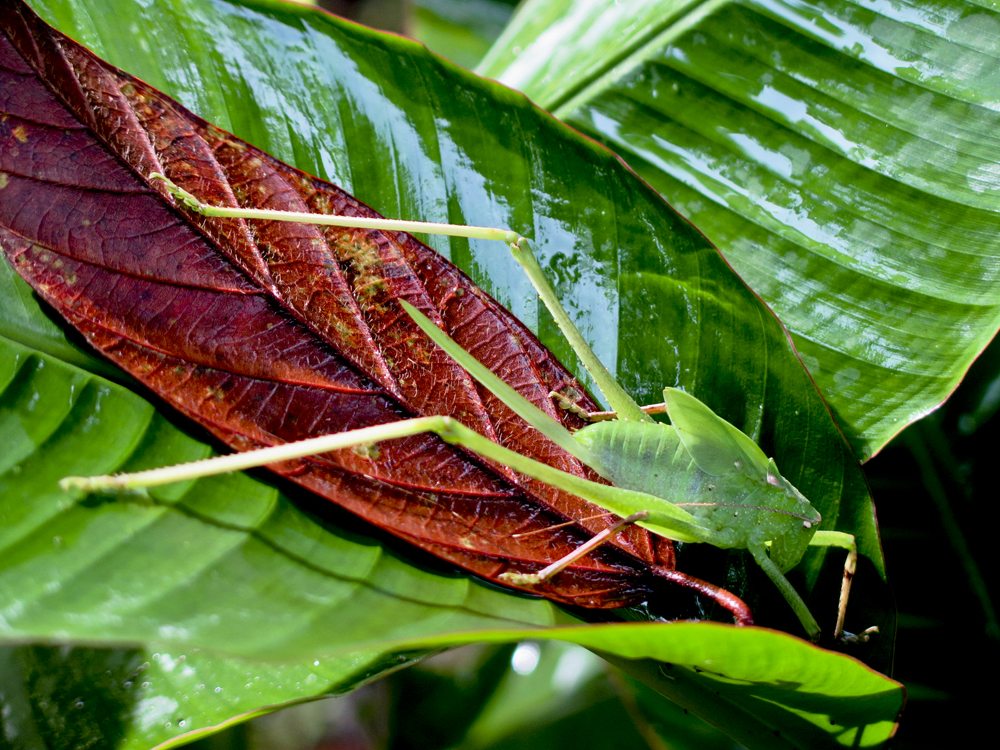 A cicada only really visible because he chose a dead leaf on which to perch rather than among the green leaves
A cicada only really visible because he chose a dead leaf on which to perch rather than among the green leaves
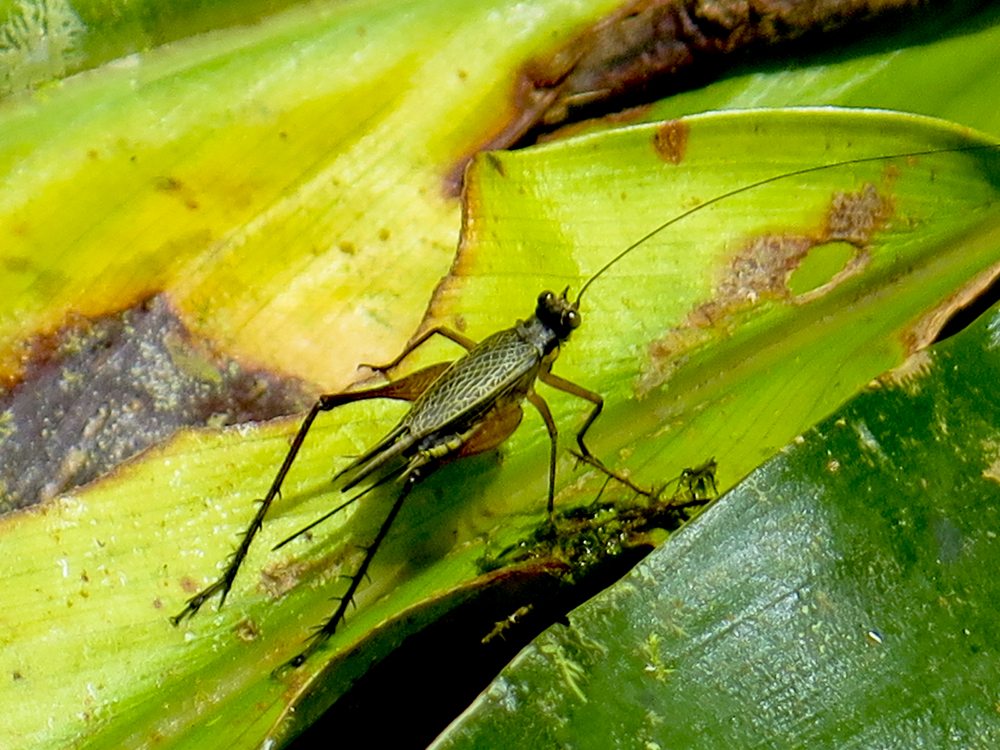 Another cicada, one antenna missing, with his patterned back looking like burnished metal
Another cicada, one antenna missing, with his patterned back looking like burnished metal
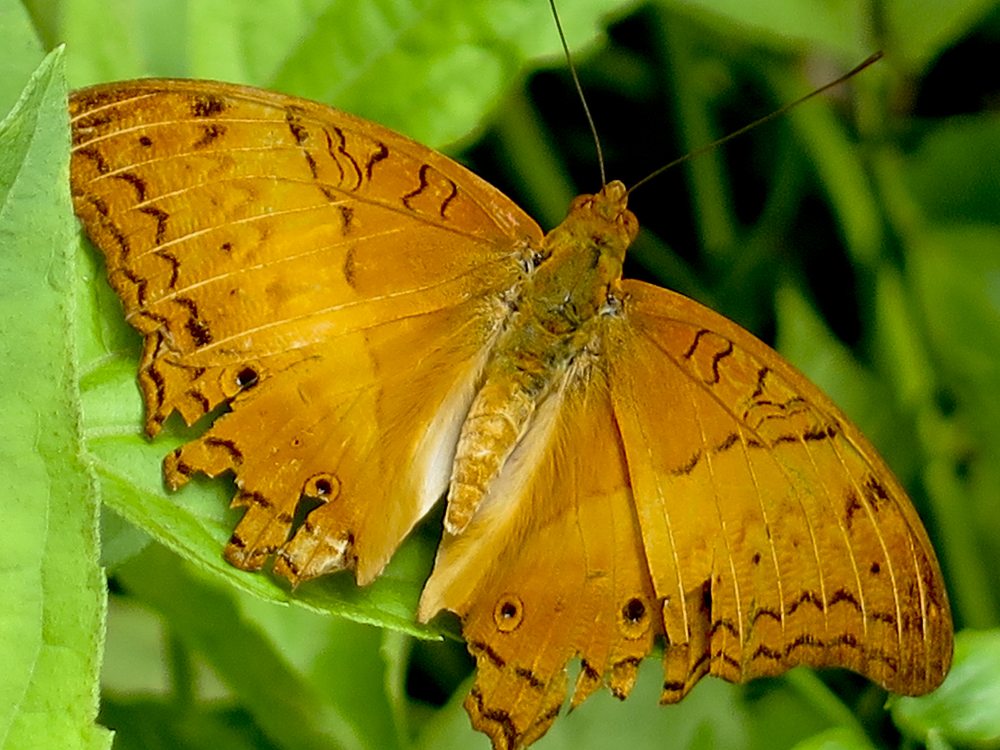 A bright yellow moth, or is it a butterfly, resting among the leaves
A bright yellow moth, or is it a butterfly, resting among the leaves
And even with little sunlight, there were ferns unfurling and bright wildflowers tucked in between
the rotting branches and the mosses and fungi of the undergrowth. 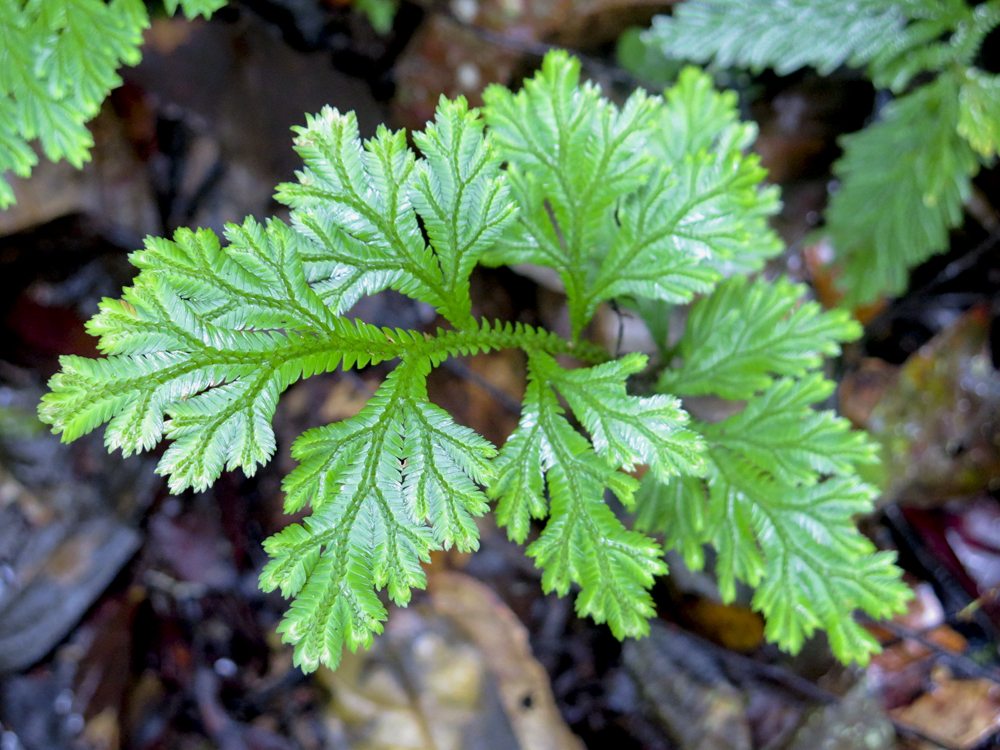 This plant, whose name I can’t remember, is a cross between a fungus and a fern
This plant, whose name I can’t remember, is a cross between a fungus and a fern
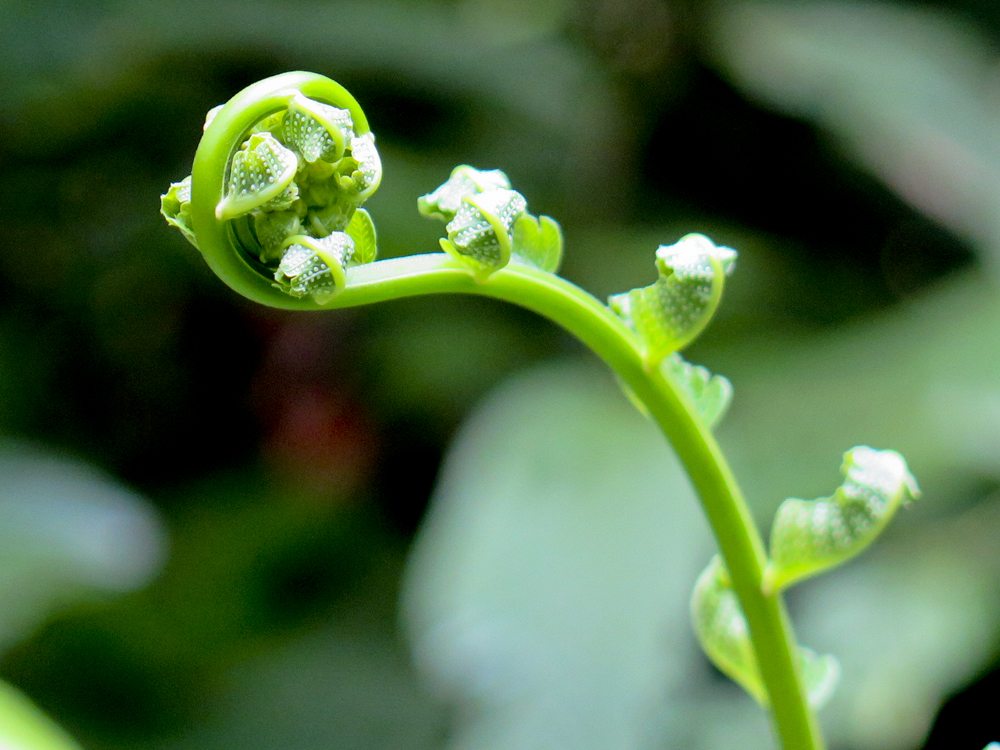 But this is most definitely a young fern frond soon to unfurl
But this is most definitely a young fern frond soon to unfurl
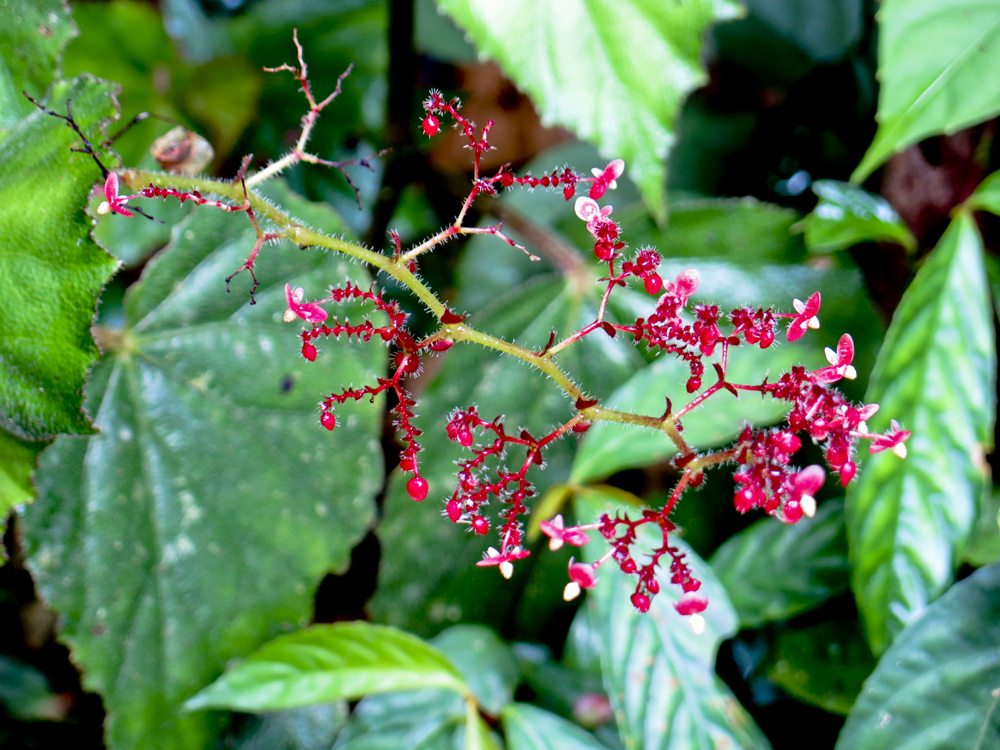 The delicate tendrils of a wild begonia
The delicate tendrils of a wild begonia
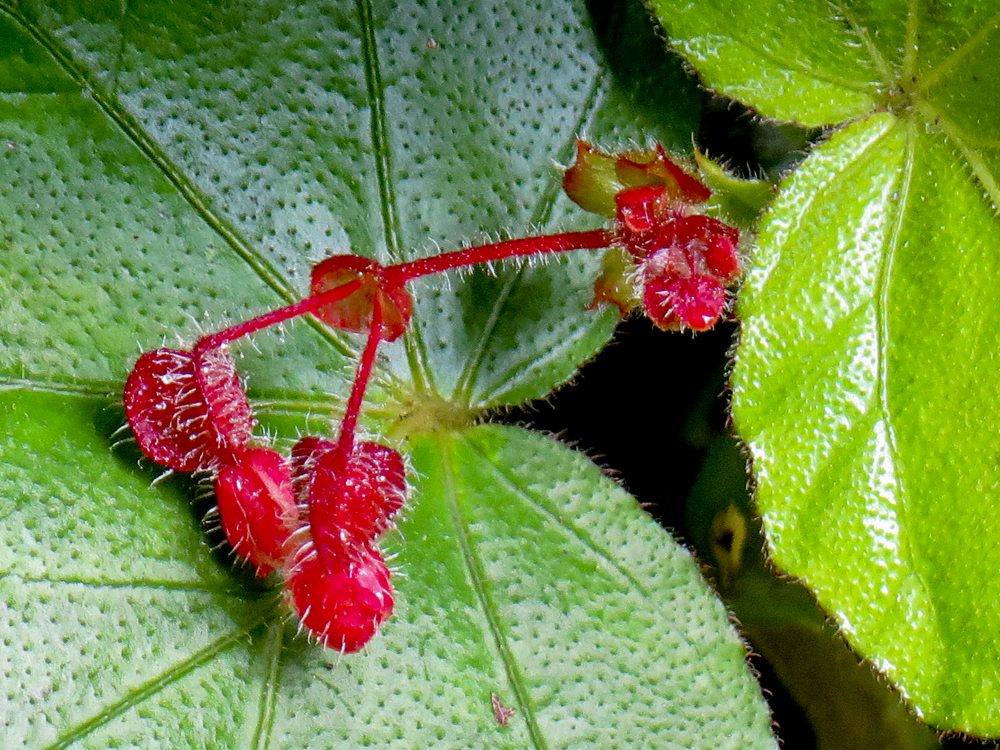 Another wild begonia set against the vibrant greens of its leaves
Another wild begonia set against the vibrant greens of its leaves
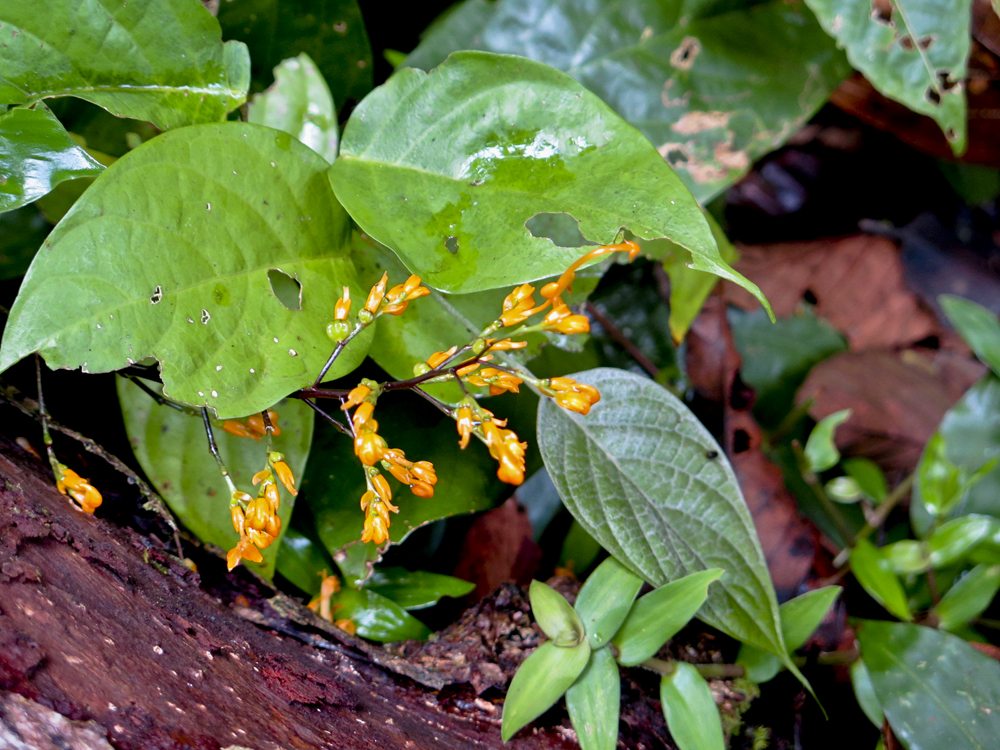 Bright yellow buds opening in the undergrowth
Bright yellow buds opening in the undergrowth
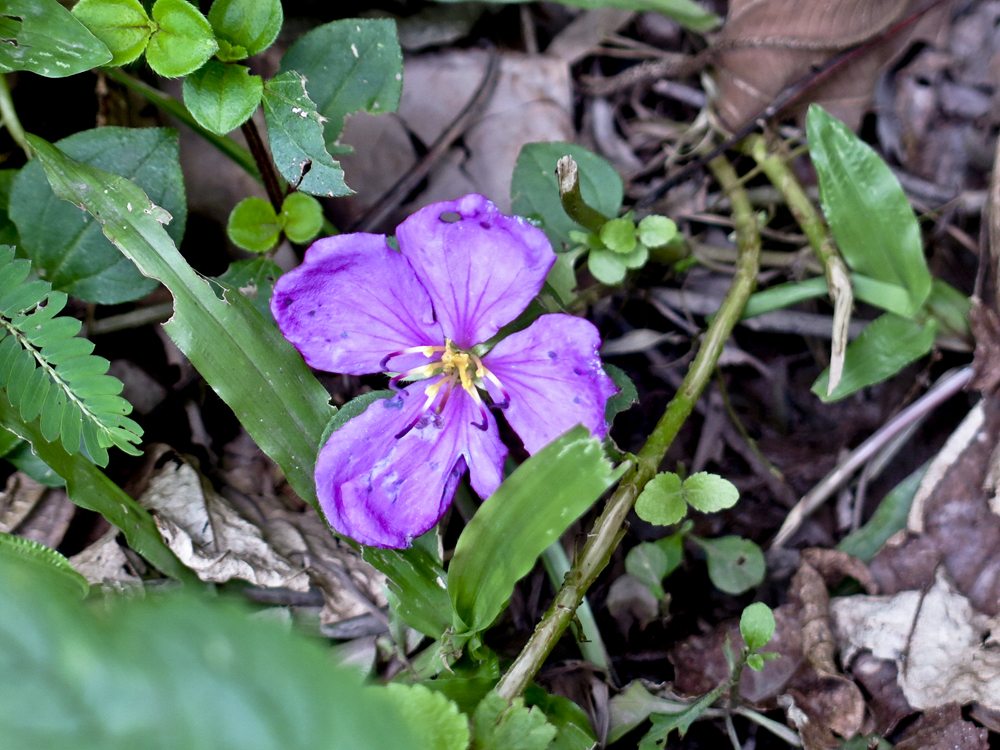 A single purple bloom emerging from the stems and dead plants
A single purple bloom emerging from the stems and dead plants
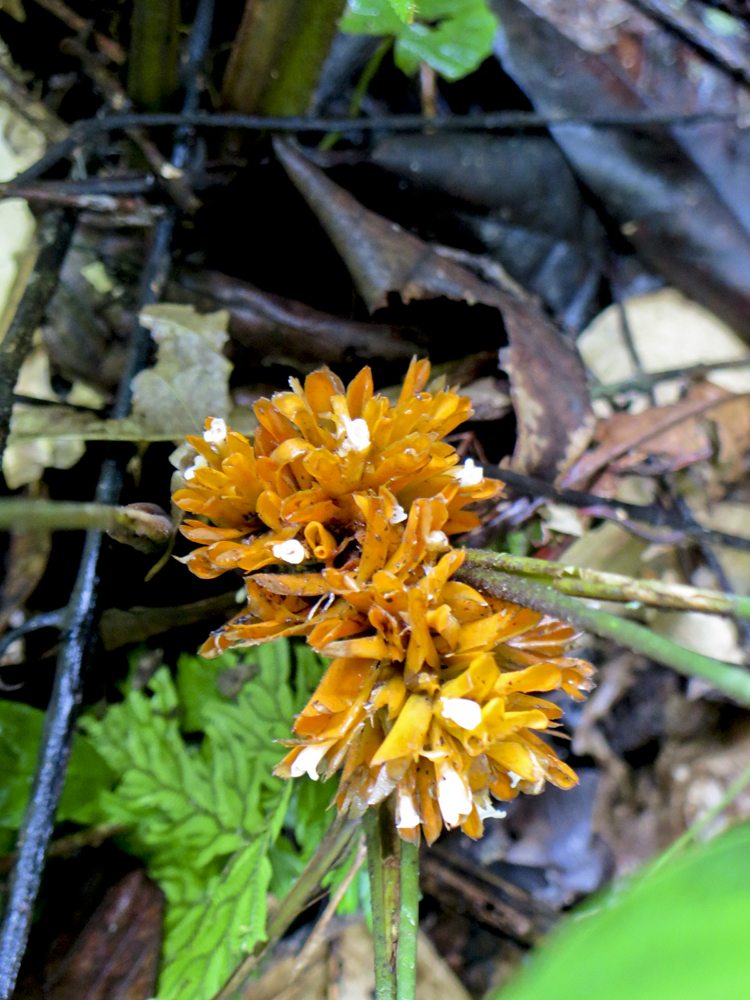 A wild ginger flower
A wild ginger flower
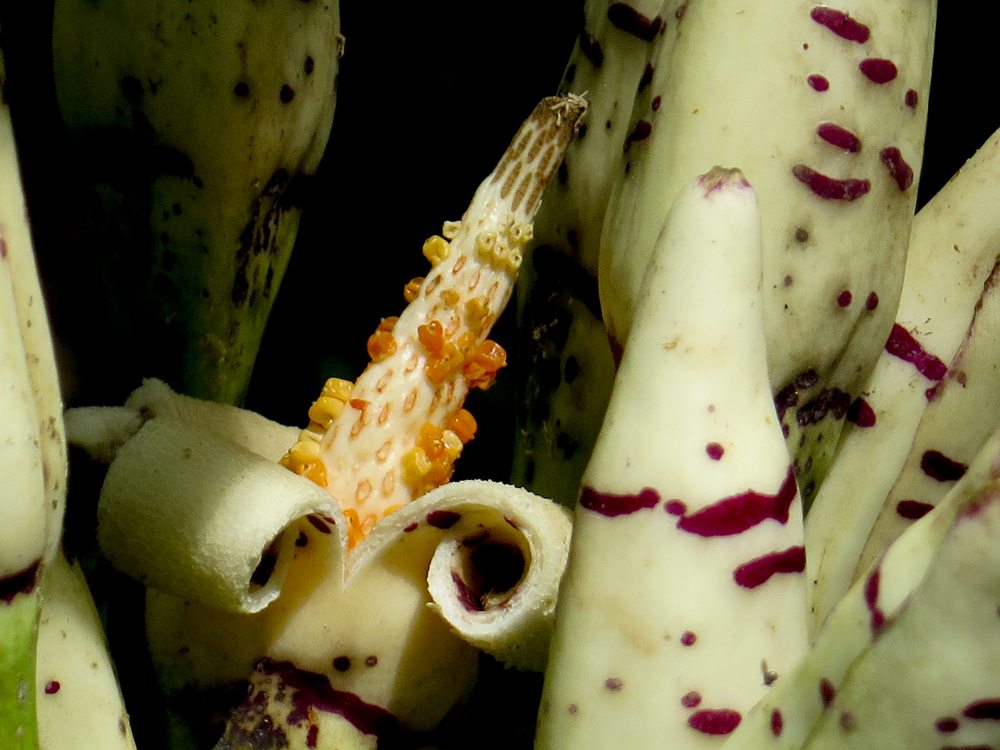 A beautiful waxy plant curling open to expose its stamen
A beautiful waxy plant curling open to expose its stamen
And finally on some of our evening walks through the rain forest we not only heard, but were able to spot a couple of frogs
and with the aid of a spotlight managed to capture their colours and bulging eyes.
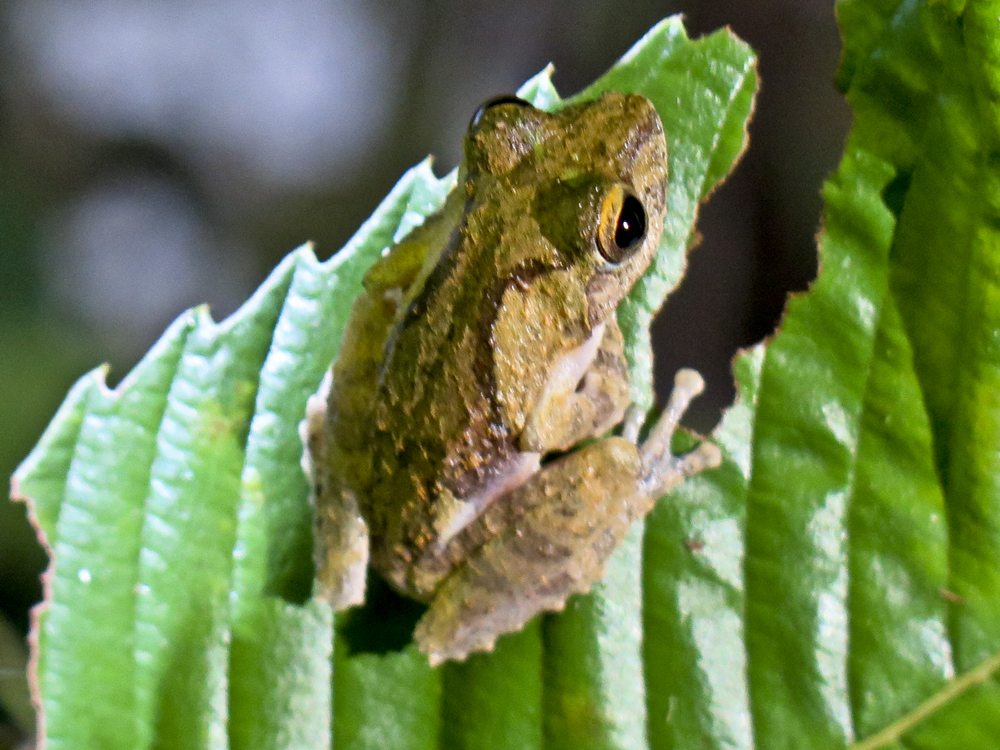 Only the eyes in focus, but this frog’s markings also clearly visible
Only the eyes in focus, but this frog’s markings also clearly visible
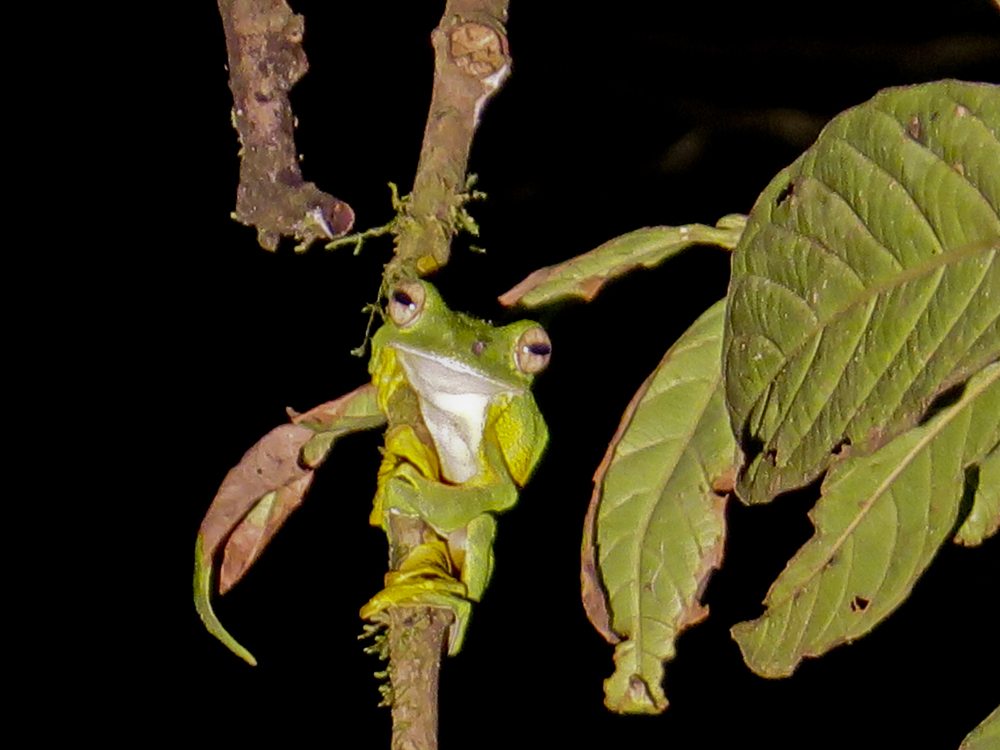 This one may be called a ‘Green Tree Frog’ but if not it is certainly a green frog in a tree
This one may be called a ‘Green Tree Frog’ but if not it is certainly a green frog in a tree
So that was it for my discoveries of the forest floor, the plants and animals certainly not as dramatic as the previous post with the
elephants, alligator, birds, monkeys and orangutans, but equally interesting in their detail and diversity.
My next and last blog from my Sabah trip, coming soon, will feature a Baja Laut Sea Gypsy village.
